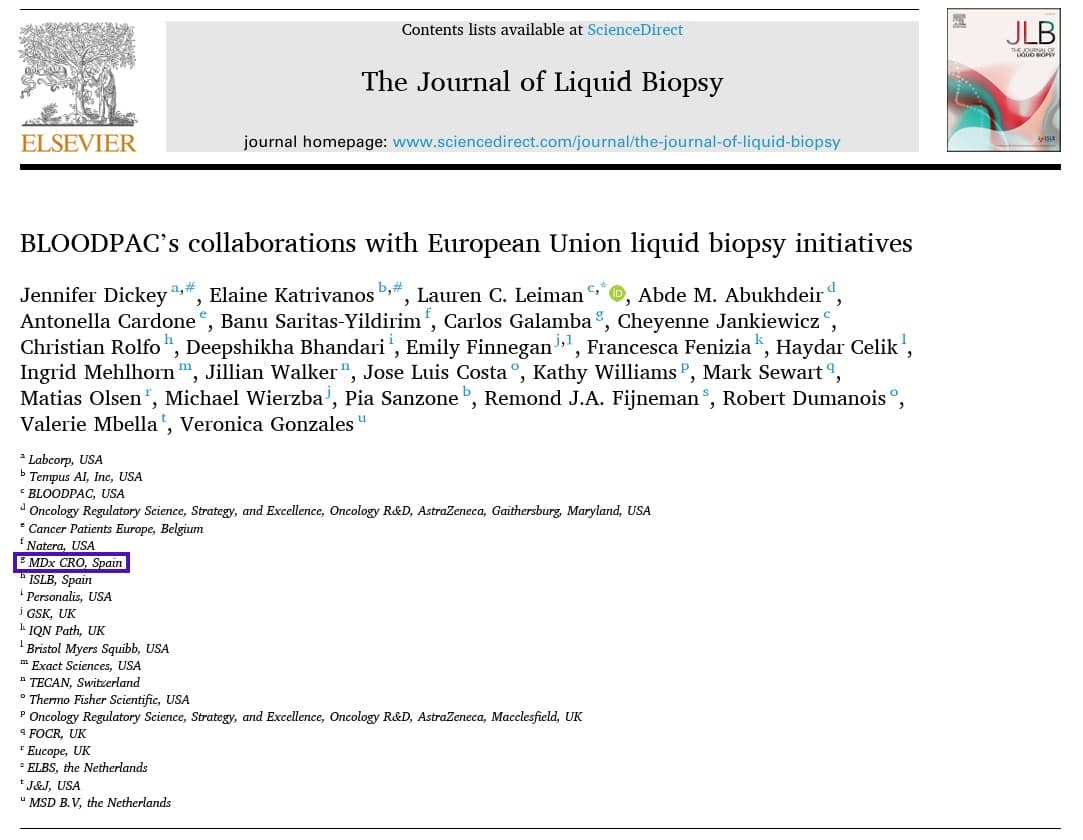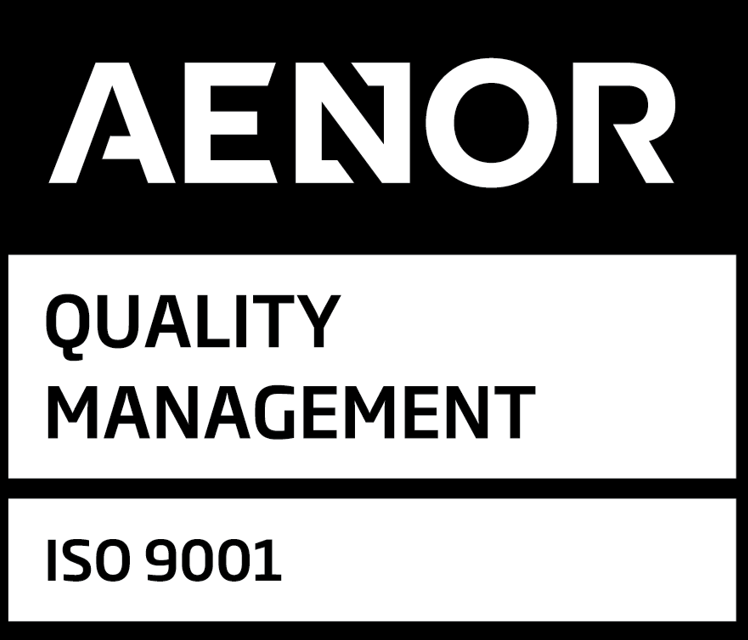MDx CRO is proud to have contributed to the peer-reviewed article, “BLOODPAC’s collaborations with European Union liquid biopsy initiatives,” published in The Journal of Liquid Biopsy (Vol. 10, Article 100321; open access). The paper outlines practical pathways to align analytical validation, clinical performance evidence, and data standards that can accelerate European adoption of liquid biopsy under IVDR.
Carlos Galamba (CEO, MDx CRO) is listed among the authors, contributing European IVDR and clinical evidence expertise to this multi-stakeholder effort.
What the paper delivers (and why it matters)
- Convergence on validation & evidence: It maps BLOODPAC’s US-developed minimum technical data elements and analytical validation protocols to EU needs—supporting more consistent clinical performance packages for IVDR submissions.
- Data standards for reproducibility: The paper emphasizes fit-for-purpose standards and pre-competitive data sharing to improve comparability across clinical research for liquid biopsy, from cfDNA/ctDNA assay development to clinical use.
- Practical EU–US collaboration: It proposes guidance and collaboration routes that can reduce variability across Member States and shorten time to patient access—without compromising IVDR rigor.
A broad coalition behind the work
The author affiliations span leading precision-medicine organizations and networks, including MDx CRO, Labcorp, Tempus AI, Natera, Exact Sciences, AstraZeneca, GSK, Bristol Myers Squibb, Johnson & Johnson, MSD, Thermo Fisher Scientific, TECAN, IQN Path, ELBS, EUCOPE, ISLB, Cancer Patients Europe, and BLOODPAC—a clear reflection of the field’s momentum toward shared, usable guidance.

MDx CRO’s contribution and perspective
Through our CEO, Carlos Galamba, MDx CRO contributed to this multi-stakeholder paper outlining practical EU–US collaboration to accelerate liquid biopsy adoption under IVDR. Our perspective aligns with the paper’s focus on:
- IVDR-first evidence architecture that cleanly links intended use → analytical validation → clinical performance requirements for ctDNA/cfDNA assays.
- Harmonized validation expectations by mapping BLOODPAC frameworks and data elements to EU evidence needs, supporting consistent submissions.
- Clearer regulatory narratives that connect validation outcomes to performance claims and real-world clinical implementation.
“This contribution reflects MDx’s commitment to turning shared frameworks into credible, IVDR-ready evidence that speeds responsible patient access” – Carlos Galamba, CEO
For IVD developers: immediate takeaways
Think trans-Atlantic. Where appropriate, re-use US learnings and BLOODPAC frameworks to reduce duplication—while meeting EU requirements.
Design for IVDR from day zero. Lock pre-analytical variables and analytical validation plans that ladder to clinical performance claims.
Adopt shared data elements. Standardized data models future-proof submissions and enable cross-study comparisons for regulators and payers.
How we execute: turning frameworks into IVDR-ready evidence
1) Study architecture (IVDR-first)
We design from intended use → analytical validation → clinical performance so claims, endpoints, and statistics line up from day one. For liquid biopsy (cfDNA/ctDNA), we predefine fit-for-purpose metrics (e.g., LoD/LoQ, precision, interference) and clinical endpoints (e.g., PPA/NPA, sensitivity/specificity).
2) Multisite execution (ISO 20916 aligned)
Feasibility and qualification of sites/labs, standardized pre-analytical controls (collection tubes, processing windows, storage), specimen logistics and chain-of-custody, risk-based monitoring, and documented deviation/CAPA management across centers.
3) Data you can trust (eCRF + eTMF)
We build validated eCRFs, enforce edit checks and audit trails, and maintain a complete eTMF/regulatory binder. Data dictionaries align with study objectives and, where appropriate, community data elements used in clinical research for liquid biopsy.
4) Analytical validation to clinical performance—without gaps
We run or coordinate liquid biopsy validation workstreams (method comparisons, reproducibility, cross-site concordance) and transition seamlessly into clinical performance studies so the evidence package is coherent under IVDR.
5) Reporting & regulatory narrative
IVDR-compliant documentation (Analytical Performance Report, Performance Evaluation Plan/Report, study reports), plus clear narratives that connect results to performance claims and labeling.
6) Governance & quality
Project governance with milestone dashboards, risk logs, vendor oversight, and audit-ready files under an ISO-driven clinical QMS.
Outcome: faster, cleaner submissions for IVDR liquid biopsy validation—and evidence that stands up to scrutiny.
Plan a study? Let’s map your assay’s intended use to the analytical validation and clinical performance evidence you’ll need.







